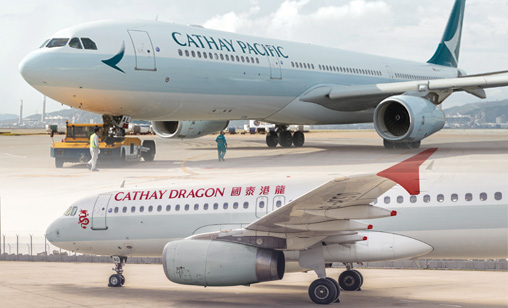Main Story
Note to customers: all aircraft park up spaces full until further notice
April 1st 2020
The COVID-19 pandemic has hit airlines hard on the financial front but also has landed them with another major problem: where to park all the aircraft they have had to ground. Read More » There is not enough space for them all, even at big hub airports. Travel industry data and analytics specialist, Cirium, said in one 24-hour period last month nearly 800 additional aircraft were grounded, bringing the total jets taken out of service in the face of disappearing demand to around 7,000 across the globe.
The rate of contraction of the global in-service passenger jet fleet continues to accelerate unabated, it said, with the number of grounded airplanes increasing even more as major airlines continue to suspend flights.
 |
Cirium’s update, on March 25, said since the day before nearly 300 additional Airbus narrow-bodies met its criteria for having been withdrawn from active duty. The corresponding figure for Boeing was a little above 200.
Wide-body fleets continue to be severely impacted by the region’s capacity cuts, with another another 100 Boeing twin-aisles parked up, together with approximately 60 more A330s, A340s, A350s and A380s.
Using the A330 wide-body fleet as an example, Cirum said on March 23 just above 300 aircraft were operating nearly 600 flights and approaching 3,000 flight hours. These figures had declined by approximately 50% compared with a week earlier. A comparison with March 25, 2019, shows a decline of 70% in the number of active aircraft and close to a 80% reduction in daily hours and cycles.
While many airlines can park a significant number of aircraft at their home airports, few carriers have room to cope with the grounding of an entire airline fleet. In Hong Kong for example, Cathay Pacific Airways, one of hardest hit airlines by the twin calamities of COVID-19 and seven months of civil unrest, is using remote bays, taxiways and other operational areas at Hong Kong International Airport to park its planes, but it still does not have sufficient space to accommodate all of its parked fleet.
The Qantas Group, which has grounded more than 150 jets and has ceased international flying, is parking 50 of its planes at small regional airport, Avalon, west of Melbourne. Apart from Sydney, both Qantas and Virgin Australia, which has a far smaller fleet, will park some aircraft at Brisbane airport and at other airports around Australia.
In Manila, some Philippine Airlines jets are parked in the Lufthansa Technik Philippines hangar. A number of airlines, both Australian and from elsewhere in the Asia-Pacific, are considering parking aircraft in central Australia at a facility run by Asia Pacific Aircraft Storage (APAS) in Alice Springs.
Already, a number of grounded 737 MAXs belonging to Singapore’s SilkAir and also to Fiji Airways are parked there because of the year-long grounding of the Boeing single aisle type.
Korean Air (KAL) and Asiana are parking jets at Seoul’s Incheon International Airport. KAL has its own airport facility on Jeju Island, normally used as a pilot training base. Thai Airways International has U-Tapao–Rayong–Pattaya International Airport available to it, a joint civil–military public airport south of Bangkok, where it operates MRO services.